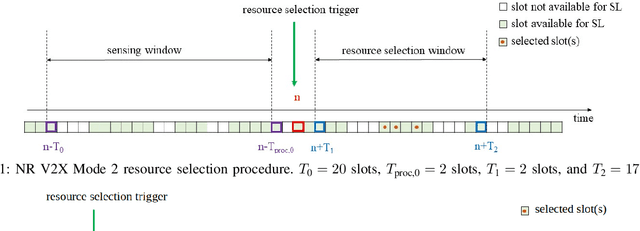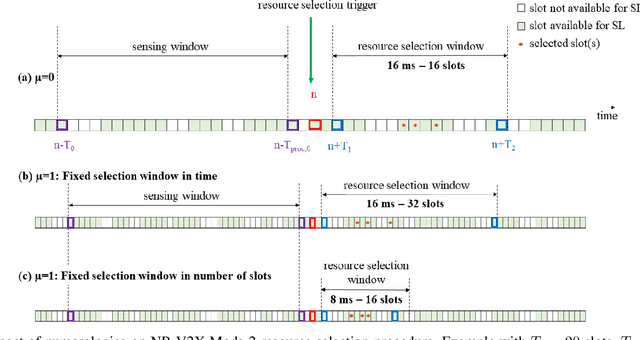Sandra Lagén
On the impact of numerology in NR V2X Mode 2 with sensing and no-sensing resource selection
Jun 06, 2021



Abstract:In this paper, we use a New Radio (NR) Vehicular-to-everything (V2X) standard compliant simulator based on ns-3, to study the impact of NR numerologies on the end-to-end performance. In particular, we focus on NR V2X Mode 2, used for autonomous resource selection in out-of-coverage communications, and consider the two key procedures defined in 3GPP: sensing and non-sensing based resource selection. We pay particular attention to the interplay between the operational numerology and the resource selection window length, a key parameter of NR V2X Mode 2. The results in a standard-compliant, end-to-end simulation platform show that in all cases, for basic service messages, a higher numerology is beneficial because of different reasons, depending on the way the resource selection window length is established.
 Add to Chrome
Add to Chrome Add to Firefox
Add to Firefox Add to Edge
Add to Edge